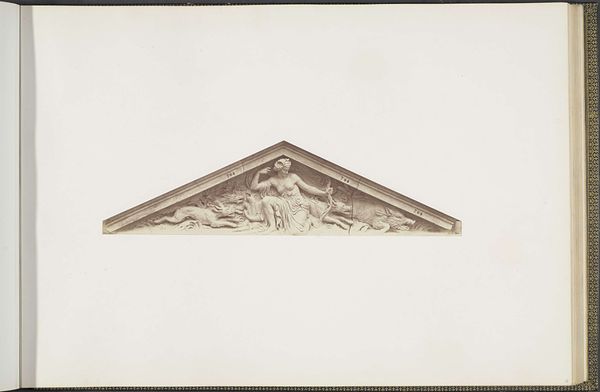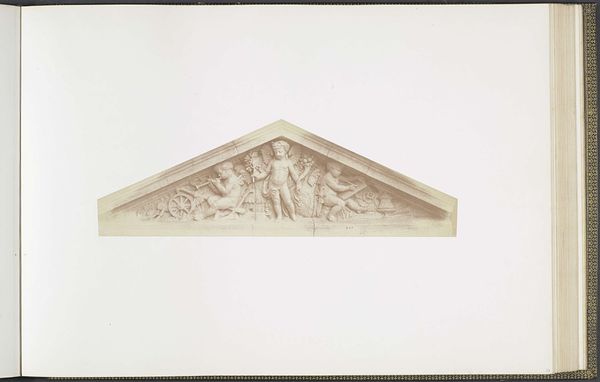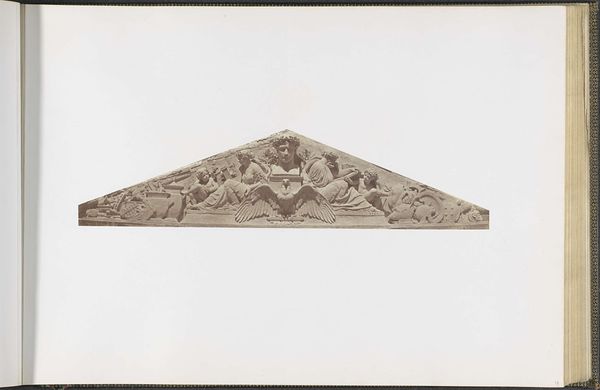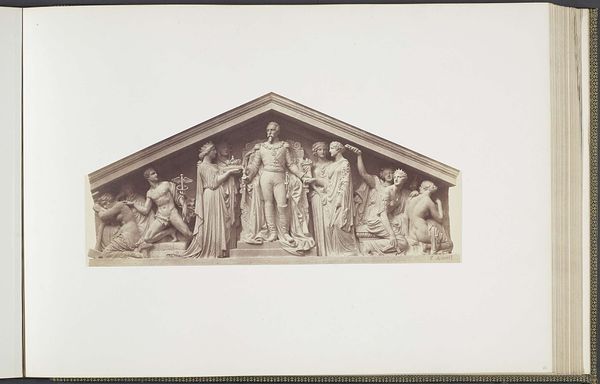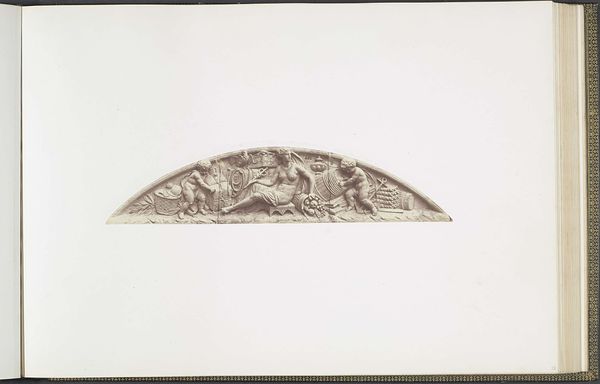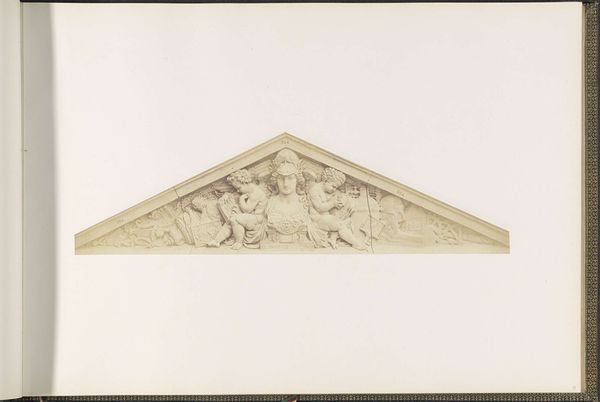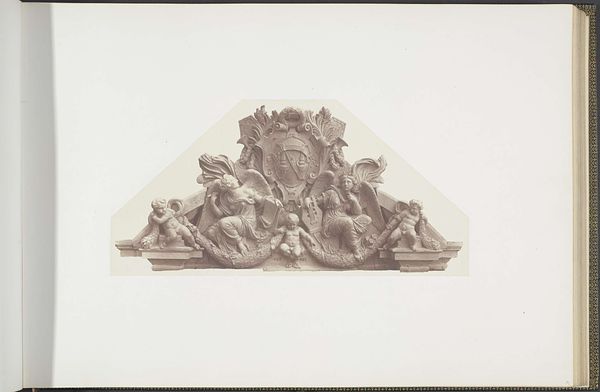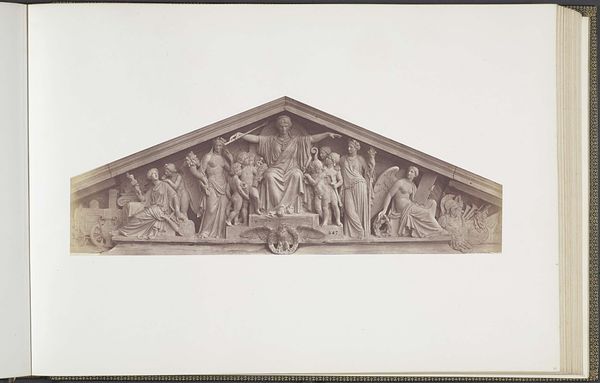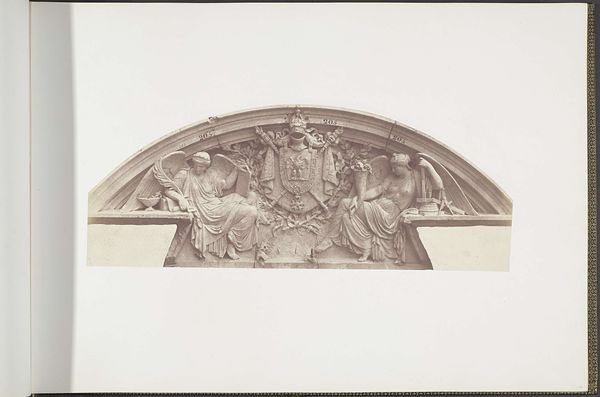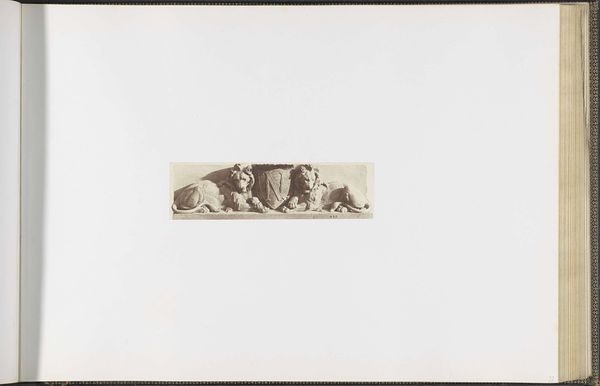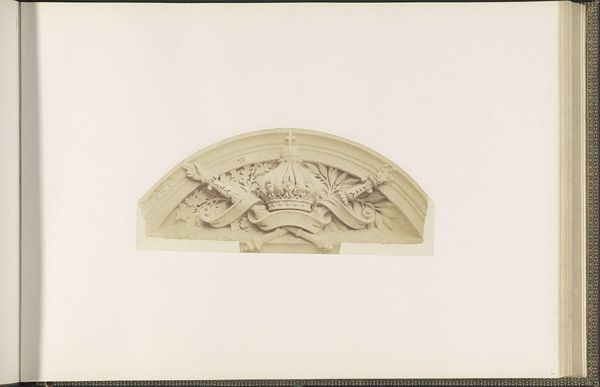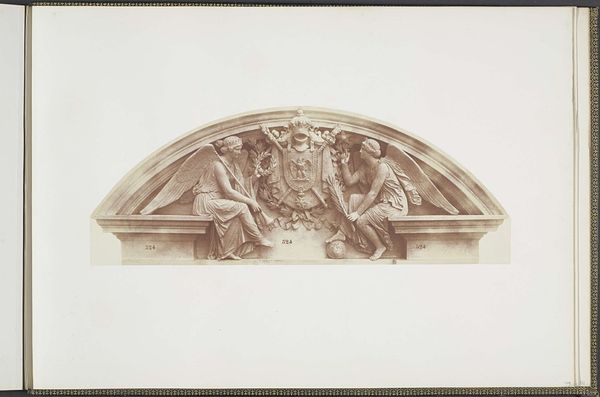
Gipsmodellen voor beeldhouwwerken op het Palais du Louvre: "La naissance du cheval" door Pierre Rouillard c. 1855 - 1857
0:00
0:00
print, relief, photography, sculpture, marble, pendant
#
portrait
#
neoclacissism
# print
#
relief
#
classical-realism
#
figuration
#
photography
#
sculpture
#
history-painting
#
academic-art
#
marble
#
pendant
Dimensions: height 378 mm, width 556 mm
Copyright: Rijks Museum: Open Domain
Curator: This photogravure, taken by Édouard Baldus between 1855 and 1857, captures the plaster models created for the sculptures adorning the Palais du Louvre; specifically, Pierre Rouillard's “La naissance du cheval." The print is currently held at the Rijksmuseum. Editor: The relief appears as a study in classical power. Two mermen or water nymphs seem to attend to a central figure of an energetic horse. The rigid geometry contrasts with a wild energy of figures straining at the borders. Curator: The photograph acts as a document of the process of creating the Louvre's decorative program, a major public undertaking of the Second Empire under Napoleon III. The focus on neoclassical style during this period reinforces the political ambition of evoking past imperial glories. The plaster models themselves provided a vital link between design and execution. Editor: This image, viewed today, poses compelling questions about access, power, and representation. Rouillard's image is inherently a Western and masculine vision; consider how its placement above the Louvre reinforced established gender and class hierarchies. It invites critical assessment through the lenses of feminist and postcolonial theory. Curator: Indeed. The choice of subject, with its implied reference to ancient mythology and idealized forms, was anything but accidental. Baldus’s documentation turns our attention toward the ways official narratives were, and still are, carefully curated through architectural and artistic expressions. Editor: I see a reminder that visual language serves very concrete purposes, extending far beyond aesthetics, and of the potential in actively engaging with and contesting it. Curator: The politics embedded in the photograph also reveals much of nineteenth-century French societal values that were visually promoted in that particular epoch.
Comments
No comments
Be the first to comment and join the conversation on the ultimate creative platform.
